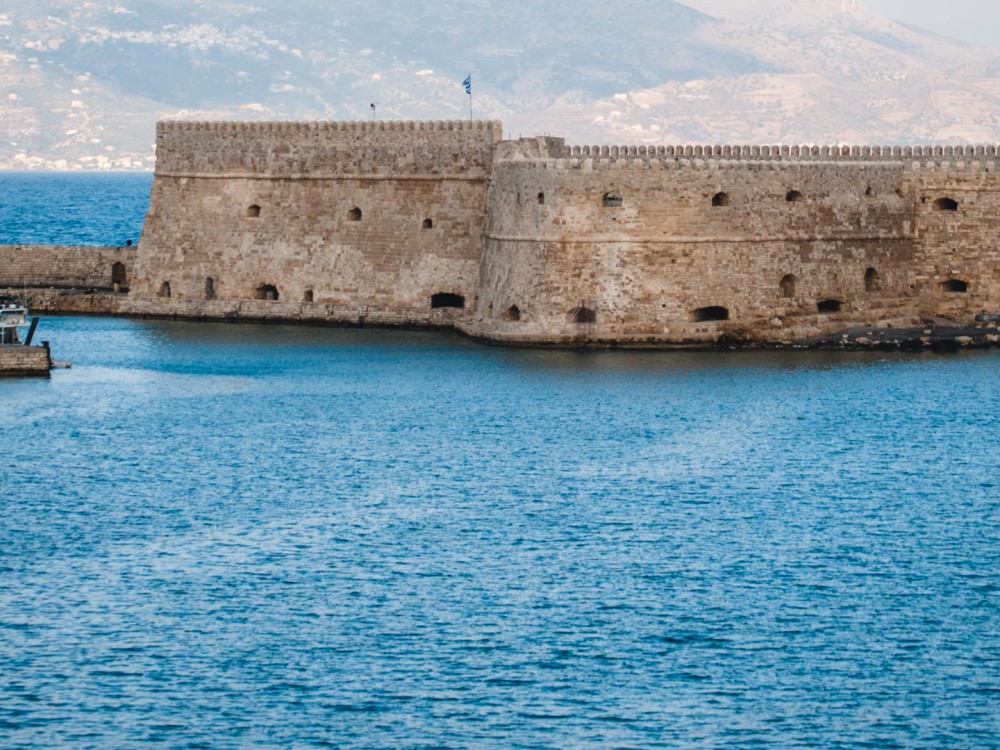Koules

The Venetian fortress Koules dominates the entrance of the Venetian port of Heraklion and was built by the Venetians. Although the Venetians called it Castello a Mare, the Castle on the Sea, today retains its Turkish name, Koules, from Su Kulesi.
The fortress is one of the most famous, intimate and beloved monuments of the city, symbol of Heraklion. Today, the Cretan Sea looks haughtily, reminiscent of the greatness of the Venetian Chandakas, while it is haunted by legends that want the Cretan revolutionaries to be horribly tortured in its wet and dark interior. We do not know exactly when the story of the Venetian fortress, Koules, begins. There is a high probability that the first fortress in the place of today was created in the period of Arab rule (9th - 10th), while a reference to a tower at the entrance of the port is made in the 2nd Byzantine period (10th - 13th), as Castellum Comunis). The tower was probably circular and suffered severe damage from the earthquake of 1303, as Duke Quinto da Canal said in his report to Venice. Today, there are some drawings of travelers who tried to map Heraklion, with an older one of Boudelmodi in 1429, depicting a tower at the entrance of the port. These designs are not necessarily reliable, as the construction depicts looks more like a work of fortified architecture of Western Europe. In the middle of 14th AD. century, gunpowder (a mixture of nitro, sulfur and carbon) appeared in Europe. It acquires such an important role in the practice of war by radically changing the way that war was conducted, that it replaced the pre-existing war machines and eliminated the defensive capability of the old fortifications. So, in the middle of 15th AD. century they found Heraklion insufficiently fortified and the tower of the port, Castellum Comunis of the Byzantines, defensively incapable and vulnerable. The Senate of Venice in 1462 approved an extensive fortification program of the city, which would protect Heraklion and the bourgous (suburbs) outside of it. The new fortification would follow the standards of the new fortification architecture with the bastions. As part of this program in 1523 the tower of the port was demolished and replaced by the fortress of Koules, which survives until this day.
Our company KretaCars unreservedly recommends a visit to this unique castle which it will be easier to get there as we offer our vehicles at the most economy prices.
